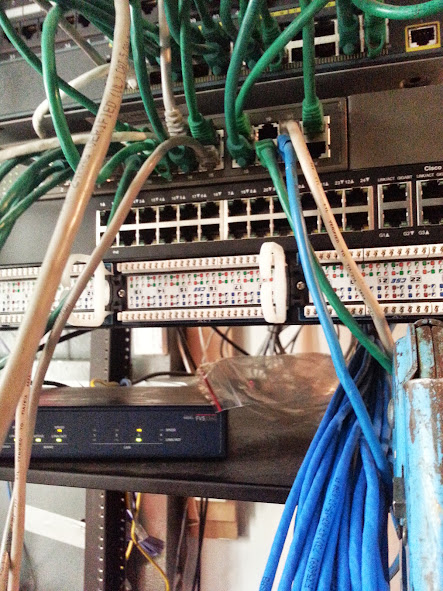Customer had 2 paging zones, and they wanted to integrate their VoIP phones with this paging system. The speakers and amplifiers were already installed when I arrived. I installed a Bogen UTI312 - named as such because it is a multi-zone Universal Telephone Interface that comes with a module for 3 paging zones, but is expandable up to 12 zones in total with the purchase and installation of additional modules (3 zones per module)
The analog line that connects to the UTI312 to connect it to the VoIP system comes from an SRP router that is mounted to the wall behind the rack. The dial tone from the analog device connects to the station port of the UTI312. The individual zones are connected to the output terminals on the UTI312 (blue wire in image for zone 1 and orange wire for zone 2) From the outputs of the UTI312 the wires are connected to the rear of the amplifiers into the TEL terminals.
Paging is initiated by dialing into the extension of the analog device. The UTI312 auto-answers and provides an acknowledgement tone. Then the user can choose to page a single zone, or page all zones. To page all zones, once the UTI312 auto-answers the user enters 00, they will hear a more pronounced tone then can make their page. To page zone 1 the user would dial 01, and to page zone 2 the user would dial 02, etc all the way to 12 depending on how many zones are active on the device. For larger installations with multiple zones, zone groups can be set up on the device so that the user can enter a programmable access code to page multiple zones at the same time when they do not want to page all zones.
 |
| UTI312 mounted below the 2 zone amplifiers. |











